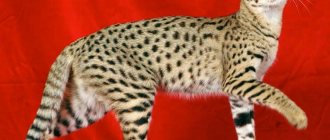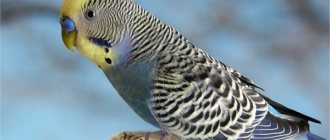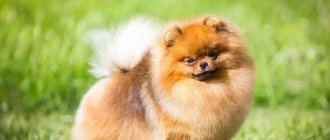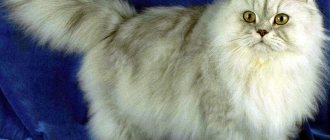Geese have high meat productivity. Birds have well-developed plumage. They are bred to produce meat and valuable fat. Warm products and decorations are made from down and feathers. The eggs are used for incubation, but they can be used for food.
Large goose
For home breeding, they try to purchase geese that are characterized by accelerated growth. In a short time they gain a lot of weight. Breeders created heavy breeds. Young animals are sold at the age of 2 months.
Toulouse
Geese are large in size. They are valued for their high weight not only of muscle mass, but also of the liver. It is used to prepare foie gras. The birds have gray plumage and a white belly.
The beak is small, greatly expanded at the base. The neck of birds is short, but massive. There are folds of fat on the abdomen. Individuals are distinguished by a wide chest and back:
- male weight – 14 kg;
- the female gains – 8 kg;
- Egg production for a meat breed is high. The masonry is 40 pcs. Egg weight 180 g.
Toulouse breed of geese
The Toulouse breed is the result of the work of French breeders. Gray geese were taken as the basis. Within the breed, 4 subspecies were bred:
- individuals that have a “wallet” at the base of the head; this is a skin sac that sags greatly under the beak; they also have folds on their belly;
- there is a “purse”, but no folds;
- birds with folds of skin on the belly, but no “purse”;
- without folds and without skin growth under the beak.
For breeding, the “purse” subspecies are preferable. They are more massive and unpretentious. The disadvantage is the poor fertility of the bird. “Bucketless” are unpretentious, but too curious and active. They gain a lot of weight, but over a long period of time.
Origin history and exterior
Geese were the first of all birds to be domesticated. They have long lived next to humans and are mentioned in the folklore of many countries in their fairy tales and songs. The ancestors of domestic waterfowl were their wild relatives, greylag geese. Only the Chinese breed came from the dry-nosed goose. But the domestication process is not finished yet. In Central Asia, they practice catching wild goslings and then raising them in households.
Tula fighting geese
All breeds are characterized by the following exterior:
- Long neck.
- Rook-like body.
- Flipper-shaped feet for swimming.
- A beak with characteristic features depending on the species.
- Varied plumage. From monochromatic to variegated.
The breeders have done a lot of work. Many breeds of different directions have been developed. There are those considered meat. This
- Kuban,
- Italian,
- Gorkovsky.
Increased vitality, adaptability to adverse conditions and at the same time distinguished by greater weight are:
- Arzamas,
- Tula,
- Shadrinskys,
- Large gray ones.
To obtain the lightest fluff and high-quality feathers, it is better to breed
- Rhine,
- Emdensky,
- Legartov,
- Vishtines.
If you raise poultry for goose liver, it is better to choose the following breeds:
- Toulouse,
- Lapland,
- Large gray ones.
The fastest growing bird breeds are
- Italian,
- Large gray ones
- Kuban,
- Gorkovsky.
As you can see, there is plenty to choose from. The main thing is to decide for yourself what is more important to you - meat or high-quality down; the vitality of the bird or its precocity. There are breeds that meet several requirements at the same time. It might be worth choosing them.
Emdenskaya
These are white, large geese. The breed was developed back in the 19th century. German specialists. It was improved by the Toulouse breed to increase meat productivity. Individuals have good immunity.
For the most part, geese are bad hens. They do not have a developed parental instinct. An incubator is purchased to mature the eggs. Duration of ripening is 30 days. The incubator is maintained at a certain temperature and humidity. Hatching begins on the 29th day.
They are recommended to be kept outdoors if weather conditions permit. They tolerate temperatures down to -5 C well. In the summer, a canopy is provided for them:
- goose weight – 13 kg;
- female weight – 10 kg;
- per year the goose brings 35 eggs, weighing 170 g;
- accelerated growth of young animals is noted. At 90 days the weight of the chick reaches 5 kg.
More on the topic: Where to start breeding geese?
The fat layer is thin. Meat has dietary properties. Good results from individuals of the Emden breed are obtained with good care. Fresh air, high humidity, and dry bedding are important for poultry.
Kholmogory
The breed appeared in the 19th century. Breeders used Chinese and Arzamas geese. The birds have good characteristics, but the meat is too fatty. Geese have a strong build. The beak is large.
There are growths at the base. Individuals belong to the “purse” birds. The plumage is gray, the belly is white. Within the breed there is another line with a white color:
| № | Helpful information |
| 1 | adult males gain 12 kg, females 9 kg |
| 2 | a goose gets 30 eggs per year, weighing 200 g |
| 3 | Chicks reach a weight of 4.5 kg at 60 days |
Geese hens are bad. Incubators are used for breeding livestock. The herd is kept in spacious enclosures. Always monitor air purity and humidity of 60%. Geese are unpretentious. They are in good health. For swimming, a container with water is installed in the enclosure.
Italian white geese
This breed of domestic geese was bred in Italy a couple of centuries ago, and to this day, its productivity, rate of weight gain in young animals, and the taste of the meat are considered exemplary. Externally, these birds look like this: the body is small and round, the head is medium-sized, and the neck is quite thick. The eyes are blue with an orange border, the legs and beak are yellow-orange. Feathers and down are always snow-white. Geese always hatch eggs and keep a vigilant eye on their offspring.
Productive characteristics:
- female weight - 5.5-6.0 kg;
- male weight - 6.0-7.5 kg;
- egg production - 40-50 pcs.;
- The average weight of one egg is 165 g.
It is interesting to read about the types of wild geese: white-fronted, snow goose.
Gray
Large greylag geese are direct descendants of wild greylag geese. The body is voluminous, there are folds on the stomach. The neck is long and wide. The main color is gray, the belly is white.
View this post on Instagram
Posted by @m_aria.tMar 30, 2021 at 3:11 PDT
The birds are very curious, active, and noisy. This is the most sought after breed. Individuals are distinguished by their unpretentiousness. Subject to normal conditions of detention, they rarely get sick:
- adult male weight 9.5 kg;
- the female weighs 6 kg;
- implementation is carried out in 4 months. From chicks you can produce a carcass weighing 5 kg;
- High egg production – 60 pcs. per year, weight 180 g;
- the liver is very heavy.
Livestock are kept on litter. It is made from hay. Nests are installed for laying hens. The size of the nest is 1.2 m. Puberty in females occurs at 9 months. Males mature at 11 months. Gray geese do well without a pond. To clean their feathers, they take sand and ash baths.
More on the topic: How long do geese live?
The largest geese: a review of large breeds for home breeding
Our villages have long been engaged in livestock and poultry farming.
This business is very profitable. Enough food to feed your family and take it out for sale. Geese breeding is one of the most profitable types of business in poultry farming. Initially, certain investments will be required, but profits will not be long in coming.
Let's consider the technology, features, strengths and weaknesses of raising these birds.
- How to start a goose breeding business?
- Pros of business
- Geese breeding technology
- What breed of geese should I choose for breeding?
- How much money do you need to start a business?
- How to start a goose breeding business
- How much money do you need to start a goose breeding business?
- What documents are needed to open a goose breeding business?
- Do you need a permit to open a goose breeding business?
- Geese rearing technology
It is difficult to look after a flock of geese alone. Often in villages business is organized as a family business. The technology itself is simple, and the bird is unpretentious. But, like any business, raising geese requires attention and some skills.
Considerable territories are allocated for their maintenance. A goose barn needs to be built on the site. However, the birds will spend very little time in it. Almost all daylight hours they walk freely and graze. There are no great requirements for a plot of land.
From a convenience point of view, the main thing is that it is close to the farmer’s home. The herd will need attention and care. It is advisable to have a small pond on the site. For a thousand heads, 200 square meters is enough. meters of water surface. Most often, such reservoirs are constructed artificially.
Permitting authorities will never give consent to opening a goose farm near residential buildings. These birds are often aggressive and noisy. The presence of a person nearby can disturb their peace.
Pros of business
Geese are valued primarily for their meat. They rarely lay eggs. No special dietary properties for the human body were found in this product. The eggs taste like chicken eggs.
As for meat, the first slaughter can be done within two months after the start of walking. On one hectare of pasture it is quite possible to raise livestock that will produce two tons of product per year.
The herd grazes from early spring to late autumn. Livestock can be slaughtered periodically throughout the season, as needed. There is no need to store large quantities of meat. It goes fresh directly to the consumer.
The farmer does not need to buy refrigeration and freezers.
In terms of profitability, raising geese is comparable to the profitability of selling beef and pork. Moreover, the latter is still the lowest in cost. The most valuable thing in a goose carcass is the liver. It is considered a delicacy.
Special breeds of geese have been bred whose livers are large and have a special, refined taste. Another source of income for the farmer is fluff. Their clothes are insulated. In terms of its properties, it is comparable only to eider down.
The price of goose insulation is much more affordable.
A few more advantages of these birds:
- they rarely get sick;
- in terms of nutrition, these birds are not picky;
- They eat everything the same as ordinary poultry.
For a thousand birds you will need a room of at least 150 sq.m. Breeding geese is possible only in a heated and permanent structure.
In winter, it will need to maintain a temperature of at least 8 degrees. If you plan to raise a flock for commercial purposes, then representatives of inspection services will certainly come to the poultry house.
To sell meat you will need to obtain an activity permit. It is issued by specialists from the sanitary and epidemiological station and veterinary service. Usually, to receive it, a farmer needs to register as an entrepreneur.
A capital building is also needed in order to obtain permission to sell poultry meat in the future.
It is believed that the wild goose, which our ancestors domesticated, was a bird of northern latitudes. Despite this, poultry must be kept warm. Old farms and poultry houses are often converted into goose houses. It is cheaper and faster to carry out and establish communications in them than to build a building from scratch.
Caring for geese also involves feeding them properly. In summer it is mostly lush greenery right on the site. But at the same time you need to add grains to your diet. In winter it is the main food of birds. Special vitamin mixtures are added to the food.
There are many breeds of geese, like other poultry. They are divided according to climatic zones (in which they are most comfortable), purpose and conditions of detention. It is not profitable for the farmer to constantly purchase new young stock. You need to master raising geese from eggs yourself.
You shouldn't rely too much on mother geese. They don't really care about their offspring. Incubators for goose eggs will come to the aid of the farmer. They are imported and domestic. The first models are designed, as a rule, for a small number of eggs.
Our devices can accommodate more than a hundred eggs.
Even the reproductive propensity of birds depends on the breed. Thus, Kholmogory and large gray geese are quite careful about their offspring. One goose can hatch no more than 7 eggs at a time.
| Breed | Signs and characteristics |
| Khokhloma | These are one of the largest birds. They have a growth on the forehead and a fold under the lower jaw. This is how they are recognized externally. An adult can weigh about 10 kg. The female produces about 40 eggs per year. These are unpretentious birds, resistant to disease. They can be bred in different climatic zones. |
| Large gray | Heavy large specimens. Adult males weigh 8 kg, and females 6 kg. The latter can lay 40 eggs in a year, but are not inclined to hatch. The breed acclimatizes well and quickly adapts to living conditions. |
| Toulouse | Bred in the warm climate of France. They gain weight well, move little and practically do not graze. Ganders weigh about 12 kg. This breed is used if you need to master breeding geese for liver. It can weigh about 1 kg per individual. |
| Landshskaya | This breed was imported from Hungary, where it was also bred to produce liver. An adult weighs about 8 kg. |
| Italian whites | Another breed for breeding for liver. At the same time, the birds provide good weight gain and a large yield of meat. The gander weighs about 9 kg. |
| Chinese | This breed has a high egg production. You can expect up to 100 eggs per year from a female. These birds are actively used in breeding work to increase this indicator in representatives of other breeds. |
Even 100 heads can already be considered a small goose farm. You will need to spend 25 thousand rubles to purchase young animals.
The premises and land can be rented. You need to purchase food and choose an incubator. In general, 120 thousand will be enough to start your own business.
rubles
In the future there will be no need to purchase chicks. The farm itself must produce new offspring.
Sometimes farmers themselves engage in breeding and develop new breeds adapted to their region.
This way you can make breeding geese even more profitable - increase egg production and improve the quality of goose meat.
To start a business, you need to register an individual entrepreneur, as well as find and prepare premises; the calculation of the area depends on the number of geese - about 100 m² per 500 birds. The building for a poultry farm should be warm, draft-free and dry.
It is recommended to make a separate fence for grazing geese. When choosing a breed of geese, you should consider the type of business, meat or eggs. Takes care of the established supply of feed and sales channels for finished products.
Equipment requires drinking bowls and feeders, and for breeding chickens you need an incubator and brooder.
List of main investments in business:
- business registration – 20,000 rubles;
- purchase of land and construction of premises - 300,000 rubles;
- repairs and equipment - 100,000 rubles;
- purchase of an incubator 150,000 – 200,000 rubles;
- purchase of chicks, 500 pieces - from 50,000 rubles;
- feed and utility costs - 300,000 rubles.
The result is the amount of initial investment is about 1,000,000 rubles.
— registration of individual entrepreneurs;
— permission from Rospotrebnadzor and fire inspection;
— a certificate from a veterinarian confirming compliance with all necessary standards in the premises;
We invite you to read: LIVE DUST FOR FRY - WHAT IS IT » Home aquarium
— a certificate for the product, also issued by a veterinarian.
Any business related to the food industry requires product certification. It is also necessary to obtain permission from Rospotrebnadzor.
After choosing a premises and purchasing healthy young poultry, you need to take care of the maintenance of the geese; the entrepreneur’s profit will depend on this.
Feeding geese should be regular and balanced; in addition to grain feed, the diet should be expanded with fresh herbs and vegetables (boiled potatoes or carrots). To breed geese, it is important to choose the right pairs; mixing birds with related ties is not allowed.
It is imperative to systematically vaccinate the bird population. In the warm season, geese grazing is recommended.
Geese always have a special place among farmers as poultry. Unlike chickens and quails, they are bred not for food eggs, but for the purpose of obtaining tasty meat.
The properties of the original product are far from dietary, but it is still highly valued for its juiciness and richness in microelements.
A goose carcass accumulates a large amount of B12, zinc, iron, and amino acids, which are important in the fight against viruses.
To ensure that the meat does not lose its benefits, the birds must be kept correctly. Questions about arranging a poultry house, feeding, choosing a breed and breeding are especially relevant for beginning breeders.
Usually, at the start of a “goose” business, hybrids that attract attention are unpretentious, early ripening and have little disease. Factories recommend recruiting livestock from one species or breeds capable of crossing without loss of performance.
Geese are bred to produce tasty meat.
Based on these characteristics, a list of recommended geese for beginners has been compiled:
- Linda (Gorkovskys) are goose leaders. They grow up to 8 kg (sometimes there are males up to 12 kg), are not picky about food, and are precocious. Egg production - 40-50 pieces, 140 g each. They eat a lot, which not everyone likes, but it pays off by selling meat.
- Kholmogory geese are considered one of the most beautiful geese. Friendly and calm in nature, they grow quickly in any climate. The weight reaches 8-10 kg. They lay up to 40 eggs per year, weighing 200-220 g.
- Chinese are a hardy meat and egg breed. Egg production is increased to 60 pieces, 130-170 g each. Weight is up to 5 kg, but the meat is less fatty than that of more massive breeds. They can be aggressive towards other species, so they are recommended for those who want to start with one breed.
- Large gray geese are the ones with the fattest livers.
It is from their liver that delicacies are made. Geese are excellent hens. They can live without a body of water. Meat weight is about 6-7 kg. Egg production is from 40 to 50 pieces, 160-200 g each. Kholmogory geese are one of the most beautiful breeds. - Italian – productive in meat (6 to 7 kg) and eggs (50 pieces). They are unpretentious in care.
- Toulouse is one of the largest breeds. Live weight – more than 10 kg. Egg production is average - about 35-40 eggs per year, but the eggs are large - from 190 to 210 g. They move little, require little space and are quickly fattened for slaughter.
- Kuban - suitable for those who are looking for a cheaper cross. At a low price, they lay up to 90 eggs per year. Average weight - about 5 kg.
- Danish Legart is the most profitable breed in terms of feed costs. They eat 20% less than many other geese, but gain weight well (at 60 days they already weigh 5-6 kg). Rarely more than 40 eggs are produced.
Vladimir clayey
The Vladimir breed appeared recently. To create it, breeders used Toulouse and Kholmogory individuals. The bird is attractive due to the color of its plumage. It's beige.
Vladimir clay geese
Geese are bred not only for good meat production, but also for decoration of the farmstead. The bird is calm and inactive. There are fat folds on the abdomen.
- male weight – 9 kg;
- the female weighs 7 kg;
- chicks grow quickly. At 2 months their body weight reaches 4.5 kg. They are being prepared for implementation;
- lean meat;
- annual clutch – 40 pieces, weighing 190 g.
Birds have well-developed plumage. Down is soft. It is valued by manufacturers of warm products. Among the disadvantages, low fertility is noted. With natural mating, the figure barely reaches 50%. To obtain offspring, they resort to artificial insemination.
Adler's
Igor Nikolaev
auto RU
Poultry of the Adler breed are bred mainly in the Krasnodar region. The geese are large and white in color. The neck is long, the head is slightly tilted upward. The chest is raised. The breed was created by specialists by crossing local birds and large gray geese:
- weight of an adult male – 8 kg;
- females weigh 6 kg;
- young animals are characterized by rapid growth. At 2 months you can get a 4 kg carcass from a chick;
- annual clutch is 40 pieces. Weight – 165 g;
- Fertility rate is low.
Young animals show good productivity when using mixed feed. They are prepared independently or purchased from breeders. From birth, chicks are given PK-21. For fattening I choose PK-22-1. Adult laying hens and breeding males are given PK-23-1.
Adler geese can be kept both in cages and on litter. The effectiveness of free feeding on pasture is noted. Birds rarely get sick. Does not require a reservoir. Being in the fresh air is important to her. In the warm season, open enclosures are organized for the herd.
Adler geese
This breed of geese was bred by Russian breeders from the Krasnodar region through numerous crossings with the best representatives of the gray geese breed. The Adler breed has a very limited breeding area - the largest number of livestock of this hybrid is concentrated in the city of Krasnodar and its adjacent regions. This type of poultry has a white color, a bluish tint may appear on the feathers, the head is medium-sized, located on an elongated neck. The beak and paws are yellow-orange. The body is large, oval in shape, its front part is slightly raised.
Productive characteristics:
- female weight - 5.0-7.0 kg;
- male weight - 6.5-9.0 kg;
- egg production - 25-40 pcs.;
- The average weight of one egg is 165 g.
Find out how to determine the sex of geese, as well as when geese begin to lay eggs at home.











